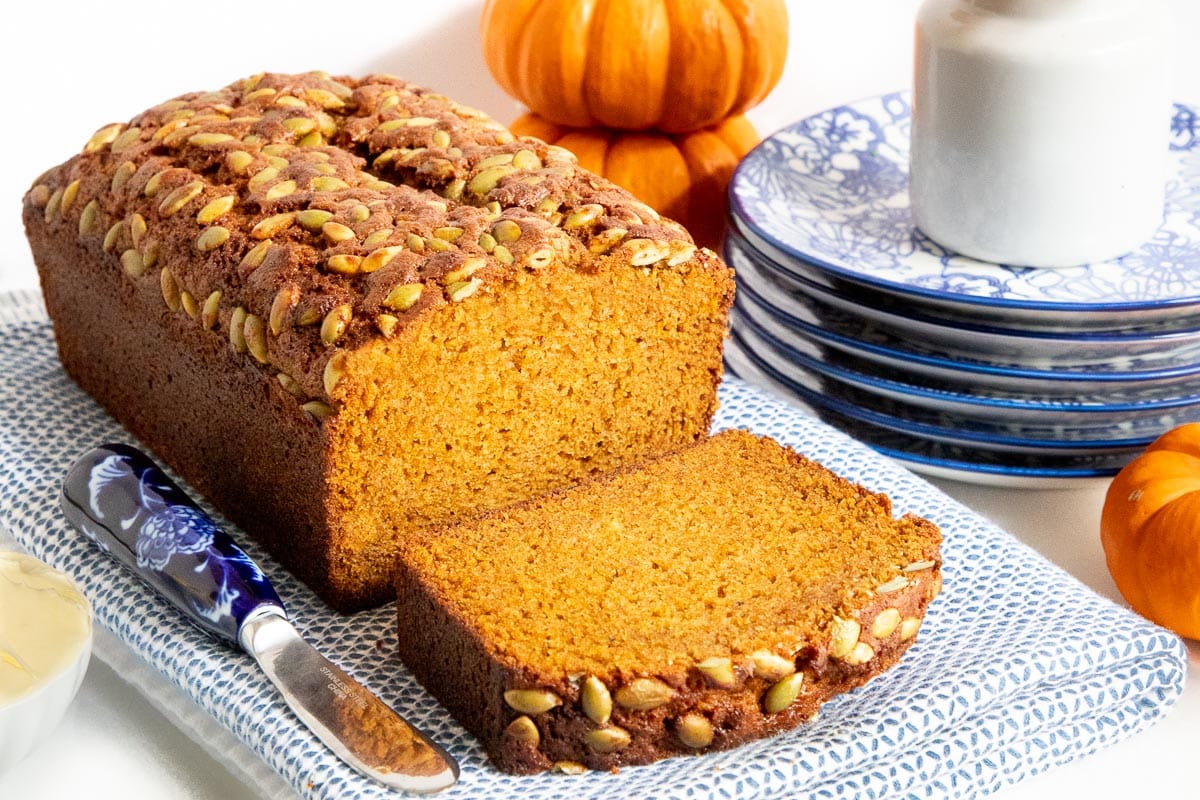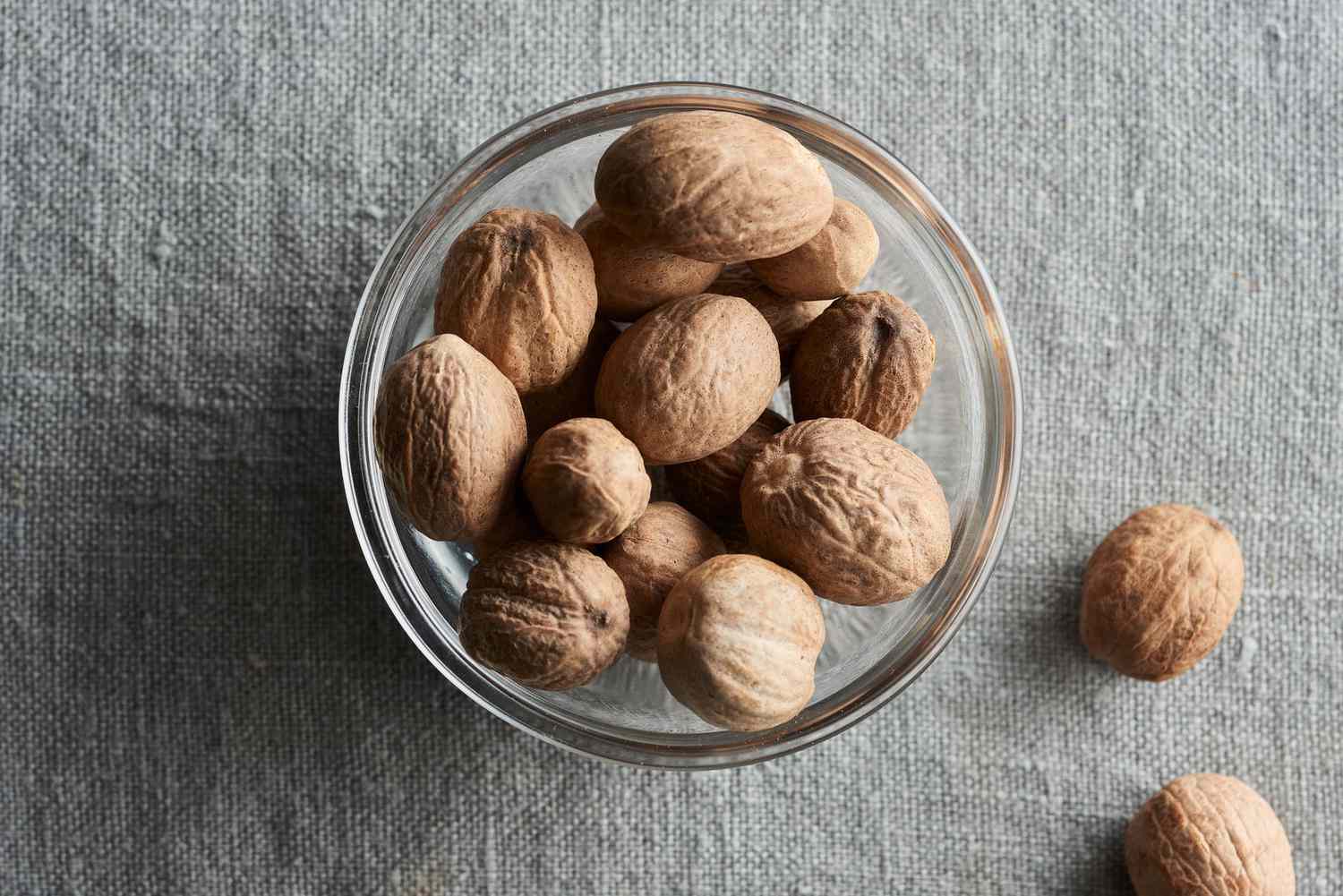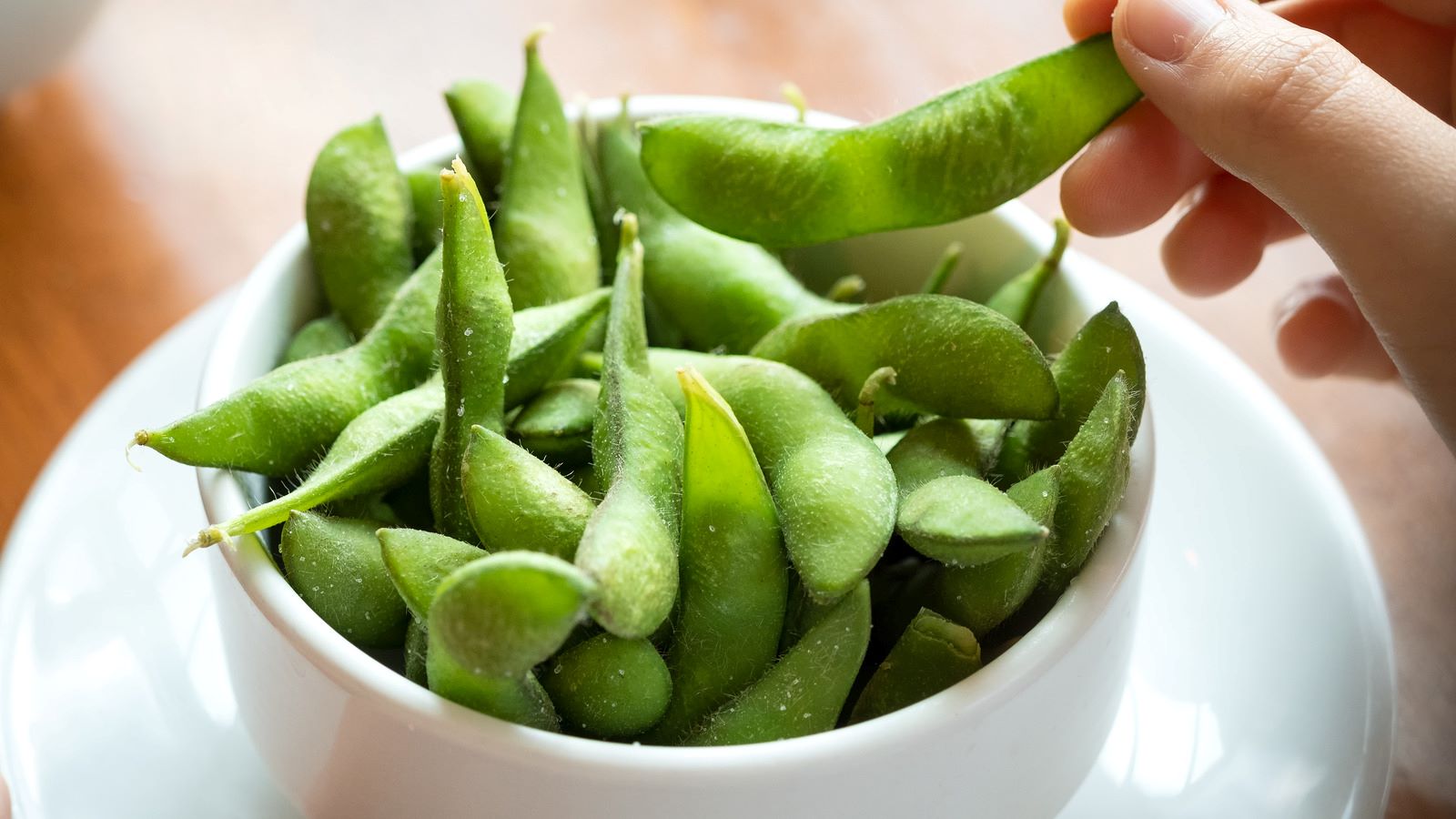

Articles
How To Store Fresh Pumpkin
Modified: October 20, 2024
Learn how to store fresh pumpkin to keep it fresh and flavorful for longer. Follow these useful tips and tricks in our informative articles.
(Many of the links in this article redirect to a specific reviewed product. Your purchase of these products through affiliate links helps to generate commission for Storables.com, at no extra cost. Learn more)
Introduction
When fall rolls around, pumpkins become a popular staple in many households. Whether you enjoy making homemade pumpkin pie or simply love the decorative charm they add to your home, it’s important to know how to properly store fresh pumpkins. Storing pumpkins correctly will ensure they remain fresh, flavorful, and in peak condition for as long as possible.
In this article, we will guide you through the process of selecting the right pumpkin, preparing it for storage, choosing the ideal storage location, and various methods of storing both whole pumpkins and cut or cooked pumpkin. We will also discuss the option of freezing fresh pumpkin and how to reuse it later. By following these tips, you’ll be able to enjoy the taste and beauty of pumpkins long after the autumn harvest is over.
Key Takeaways:
- Choose firm, unblemished pumpkins with intact stems for longer shelf life. Prepare by washing, drying, and optionally removing the stem. Store in a cool, dark, well-ventilated area for extended freshness.
- Freeze fresh pumpkin for up to 12 months. Thaw slowly in the refrigerator, drain excess liquid, and pat dry before using in various recipes. Enjoy the delightful taste and versatility of pumpkins year-round!
Read more: How To Store Pumpkins
Selecting the Right Pumpkin
When it comes to storing fresh pumpkins, selecting the right ones is crucial. The quality of the pumpkin at the time of purchase will greatly affect its shelf life and how well it will store. Here are some tips to help you choose the perfect pumpkin for storage:
- Look for firmness: Select pumpkins that are firm and free from any soft spots or blemishes. A pumpkin that feels slightly heavy for its size is usually a good sign of freshness.
- Check the stem: The stem of the pumpkin should be hard and firmly attached to the pumpkin. Avoid pumpkins with brittle or easily detached stems, as this can be an indication of a mature or deteriorating pumpkin.
- Inspect the skin: Opt for pumpkins with a smooth, unblemished skin. Avoid those with deep cuts or punctures, as they can lead to quicker spoilage. A vibrant and evenly colored skin is also a good sign of a healthy pumpkin.
- Consider size and weight: Depending on your needs, choose pumpkins that are appropriate in size. Smaller pumpkins are typically easier to store and may have a longer shelf life. Additionally, heavier pumpkins tend to have a higher water content, which can affect how well they store.
By carefully selecting pumpkins that meet these criteria, you’ll have a better chance of storing them successfully and prolonging their freshness.
Preparing the Pumpkin for Storage
Before storing your fresh pumpkin, it’s important to properly prepare it to ensure longevity. Follow these steps to prepare your pumpkin for storage:
- Wash the pumpkin: Give the pumpkin a thorough wash with water to remove any dirt or debris on the surface. This helps prevent the growth of bacteria or mold during storage.
- Dry the pumpkin: After washing, make sure the pumpkin is completely dry. Excess moisture can lead to rotting, so pat it dry with a clean towel or leave it to air dry for a few hours.
- Remove the stem (optional): If you plan to store the pumpkin for an extended period, removing the stem can help prolong its shelf life. Use a sharp knife or pruning shears to carefully cut off the stem about 1-2 inches from the top of the pumpkin.
- Handle with care: Be gentle when handling the pumpkin to prevent any damage that could lead to spoilage. Avoid forcefully gripping or dropping the pumpkin.
- Inspect for damage: Thoroughly check the pumpkin for any cuts, bruises, or soft spots. If you notice any areas of damage, use a small knife to carefully remove the affected area, ensuring you cut away any compromised flesh.
By following these preparation steps, you’ll be ready to store your pumpkin in the best possible condition, reducing the risk of spoilage.
Choosing the Right Storage Location
The storage location plays a crucial role in keeping your fresh pumpkin in good condition. Consider the following factors when selecting the ideal storage spot:
- Temperature: Pumpkins prefer cooler temperatures for storage, ideally between 50°F and 55°F (10°C and 13°C). Avoid storing them in areas that are too warm or prone to temperature fluctuations, such as near radiators or in direct sunlight.
- Humidity: Pumpkins thrive in moderate humidity levels, around 50% to 70%. Too much moisture can promote rotting, while overly dry conditions can cause shriveling. A basement or cellar with controlled humidity is often a suitable storage option.
- Ventilation: Adequate airflow is important to prevent the buildup of mold or moisture. Choose a storage location that allows for some ventilation, such as a cool, well-ventilated pantry or a ventilated box.
- Darkness: Exposure to light can cause premature aging and deterioration of the pumpkin. Opt for a storage location that is dark or minimally lit, such as a cool cupboard or a cloth-covered shelf.
By finding a storage spot that meets these criteria, you’ll provide the optimal environment for your pumpkin’s longevity.
Storing the Whole Pumpkin
If you have purchased more pumpkins than you can use right away, storing them whole is a great option. Follow these steps to store a whole pumpkin:
- Clean the pumpkin: Ensure the pumpkin is clean and dry before storage, following the steps mentioned earlier.
- Wrap it in newspaper: Take a few sheets of newspaper and wrap the pumpkin completely. This helps to absorb any excess moisture and keeps the pumpkin protected from light.
- Choose a cool and dry location: Find a cool and dry area, such as a basement or a garage, that maintains a consistent temperature and provides adequate ventilation.
- Place the pumpkin on a soft surface: To prevent any potential damage, place the pumpkin on a soft cushion or layer of straw in its storage location.
- Check periodically: Regularly inspect the pumpkins for any signs of spoilage such as soft spots or mold. Remove any affected pumpkins to prevent the spread of decay.
When stored correctly, whole pumpkins can last for several weeks or even a few months, allowing you to enjoy them well beyond the harvest season.
After cutting a fresh pumpkin, store it in the refrigerator in an airtight container for up to 5 days. For longer storage, you can also freeze the pumpkin in a sealed freezer bag for up to 6 months.
Read more: How To Store Pumpkin Seeds
Storing Cut or Cooked Pumpkin
If you’ve already cut or cooked your pumpkin and have leftovers to store, here are some tips to ensure they stay fresh:
- Cool the pumpkin: Allow the cut or cooked pumpkin to cool completely before storing. This helps prevent condensation and moisture buildup, which can lead to spoilage.
- Transfer to airtight containers: Place the cut or cooked pumpkin in airtight containers, such as food storage containers or resealable plastic bags. Make sure to remove as much air from the containers as possible before sealing them.
- Label and date: To track the freshness of the pumpkin, label the containers with the contents and the date of storage. This will help you prioritize which ones to use first.
- Refrigerate promptly: Place the containers in the refrigerator as soon as possible after preparation. The cool temperature will help slow down the spoilage process.
- Use within a few days: Cut or cooked pumpkin will typically stay fresh in the refrigerator for up to 3-5 days. It is best to use it within this time frame to ensure optimal flavor and quality.
By following these guidelines, you can extend the shelf life of cut or cooked pumpkin and have it readily available for various recipes and meals.
Freezing Fresh Pumpkin
Freezing fresh pumpkin is an excellent way to preserve its flavor and texture for an extended period. Follow these steps to properly freeze fresh pumpkin:
- Prepare the pumpkin: Start by cleaning, peeling, and removing the seeds from the pumpkin. Cut it into chunks or slices, depending on how you plan to use it later.
- Blanch the pumpkin: Blanching helps preserve the pumpkin’s color and texture. Bring a large pot of water to a boil and add the pumpkin pieces. Cook them for about 2-3 minutes, then promptly transfer them to an ice bath to cool.
- Drain and pat dry: Drain the blanched pumpkin thoroughly and gently pat dry with a paper towel to remove any excess moisture.
- Package for freezing: Place the drained and dried pumpkin pieces into freezer-safe containers or bags. It’s a good idea to separate them into individual portions to make it easier to thaw only what you need.
- Label and date: Label the containers or bags with the contents and the date of freezing. This ensures you can keep track of how long the pumpkin has been in the freezer.
- Freeze the pumpkin: Place the containers or bags in the freezer and make sure they are lying flat so the pumpkin freezes evenly. Leave some headspace in the containers or remove excess air from the bags before sealing.
Frozen pumpkin can be stored in the freezer for up to 10-12 months. Be sure to use it within this timeframe for the best quality and flavor.
Reusing Frozen Pumpkin
When it’s time to use the frozen pumpkin, follow these steps to ensure it is properly thawed and ready for your recipes:
- Thaw in the refrigerator: Transfer the frozen pumpkin from the freezer to the refrigerator and allow it to thaw slowly. This gradual thawing helps retain the pumpkin’s texture and flavor. Depending on the amount, it may take several hours or overnight to thaw completely.
- Drain any excess liquid: After thawing, the pumpkin may release some liquid. Drain any excess liquid by placing the thawed pumpkin pieces in a colander or strainer and letting the liquid drain away.
- Pat dry: Gently pat the pumpkin pieces dry with a paper towel to remove any remaining moisture. Excess moisture can affect the consistency of your recipes.
- Use in recipes: Frozen pumpkin can be used in a wide range of recipes, including pies, soups, breads, and more. Simply add the thawed pumpkin to your recipe as directed, adjusting the measurements if needed. The flavor and texture of the frozen pumpkin should remain intact.
- Store leftovers properly: If you have leftover thawed pumpkin, store it in the refrigerator in an airtight container for up to 3-5 days.
By following these steps, you can effectively reuse your frozen pumpkin and enjoy its delicious flavor in various dishes throughout the year.
Conclusion
Properly storing fresh pumpkins is essential to extend their shelf life and ensure they remain fresh and flavorful for as long as possible. By selecting the right pumpkin, preparing it correctly, and choosing an ideal storage location, you can enjoy the taste and beauty of pumpkins long after the harvest season has ended.
Whether you store whole pumpkins, cut or cooked pumpkin, or opt to freeze your fresh pumpkin, following the recommended steps will help preserve their quality. Remember to label and date your stored pumpkins and regularly check for any signs of spoilage to prevent the spread of decay.
Freezing fresh pumpkin is a convenient way to preserve its flavor and texture for future use. Thawing the frozen pumpkin in the refrigerator, draining excess liquid, and patting it dry are crucial steps for reusing it in various recipes.
By implementing these storage techniques, you can enjoy the delightful taste and versatility of pumpkins throughout the year. Whether you’re baking a homemade pumpkin pie or whipping up a comforting pumpkin soup, having well-stored fresh pumpkin at your disposal will ensure delicious results every time.
So take care in selecting, preparing, and storing your fresh pumpkins, and savor the flavors and joys they bring to your autumn and beyond.
Frequently Asked Questions about How To Store Fresh Pumpkin
Was this page helpful?
At Storables.com, we guarantee accurate and reliable information. Our content, validated by Expert Board Contributors, is crafted following stringent Editorial Policies. We're committed to providing you with well-researched, expert-backed insights for all your informational needs.















0 thoughts on “How To Store Fresh Pumpkin”